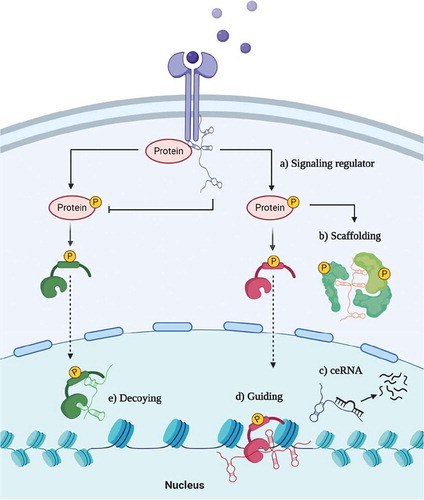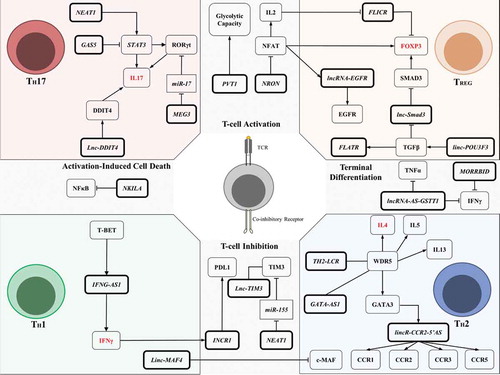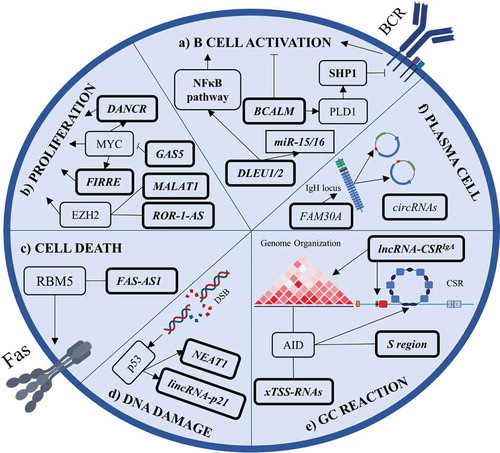Figures & data
Figure 1. Schematic overview of lncRNAs’ mechanisms of action. LncRNA can a) promote or disrupt signal transduction by interacting with proteins, b) serve as a scaffold to proteins, c) act as competing endogenous RNAs (ceRNA) and bind miRNAs, d) guide or e) decoy transcription factors

Table 1. Summary of lncRNAs involved in T cell biology
Figure 2. Summary of lncRNAs’ regulatory networks involved in T cell biology. LncRNAs influence T cell activation and inhibition by participating in TCR cascade and T cell inhibition through co-inhibitory receptor signals (centre of the figure top and bottom). LncRNAs are also involved in differentiating TH subsets and their effector functions (such as TH17, TREG, TH1, TH2; see corners of the figure for each subset). These lncRNAs can dictate TH polarization upon TCR activation and contribute to T cell response. LncRNAs are indicated in bold boxes, miRNAs in rectangles, and proteins or functions in other boxes. Arrows indicate positive regulation, blunt-ended lines indicate negative regulation, and straight lines indicate interaction. Gene names in red indicate typical markers for each subset of the TH population

Table 2. Summary of lncRNAs involved in B cell biology
Figure 3. Summary of lncRNAs’ involvement in B cell biology. a) BCALM and DLEU1/2 are involved in B cell activation. BCALM drives a negative feedback loop with SHP1 to decrease BCR-mediated activation while DLEU1/2 cis-regulates NFκB-related genes. b) LncRNAs can promote malignant B cell proliferation by interacting with EZH2 and by being a part of MYC’s pro-proliferative program. c) FAS-AS1 promotes membrane Fas isoform generation. FAS-AS1 is epigenetically repressed in B cell lymphomas, leading to soluble Fas generation and cell death evasion. d) NEAT1 and lincRNA-p21 are regulated by p53 during DNA damage response. e) During germinal centre (GC) reaction, AID interacts with xTSS-RNAs that influence genome integrity. AID also binds transcripts from the S region to drive class switch recombination and lncRNA-CSRIgA specifically induces an IgA class switch. f) FAM30A is an antisense RNA from the IgH locus that positively correlates with high antibody titres. Plasma cells generate high levels of circRNAs from Ig genes. LncRNAs are indicated in bold boxes, miRNAs in rectangles, and proteins or pathways in other boxes. Arrows indicate positive regulation, blunt-ended lines indicate negative regulation, and straight lines indicate interaction. DSB, double-strand break; CSR, class switch recombination

